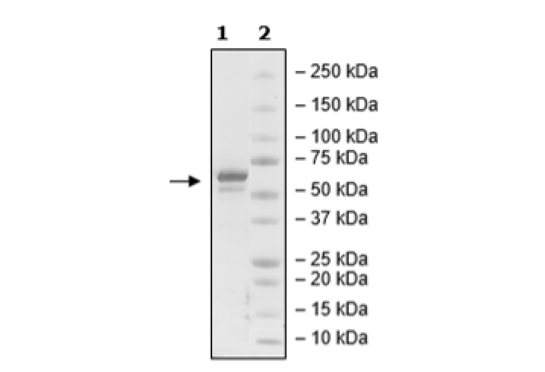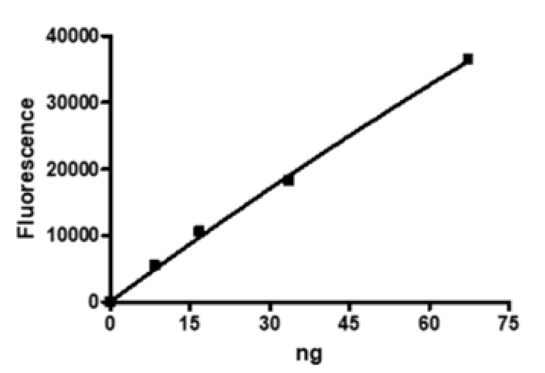HDAC2, FLAG-tag Recombinant
Recombinant Human HDAC2 (histone deacetylase 2), full length, encompassing 1-488(end). This construct contains a C-terminal FLAG-tag. The recombinant protein was affinity purified.
This product has been cited 41 times.
≥85%
Aqueous buffer solution.
40 mM Tris-HCl, pH 8.0, 110 mM NaCl, 2.2 mM KCl, 20% glycerol, and 80 µg/ml FLAG peptide
≥1020 pmol/min/µg
HDAC2, or histone deacetylate 2, is a Class I member of the histone deacetylase family which is involved in lysine deacetylation. Lysine acetylation/deacetylation is a dynamic process involved in the regulation of a variety of cellular functions, similarly to phosphorylation/dephosphorylation. Abnormal levels of HDAC2 contribute to cancer progression via multiple mechanisms and can be used as a biomarker, for instance in colorectal cancer (CRC). HDAC2 overexpression leads to AKT phosphorylation and hepatocarcinogenesis or regulate expression of K+-Cl- cotransporter-2 and regulate pain in bone cancer. HDAC2 dysfunction has been linked to CRC, prostate cancer, bone, pancreatic and oral cancer, amongst others. Overexpression of HDAC2 contributes to chemoresistance to agents such as doxorubicin in CRC, and it has been shown that silencing HDAC2 can result in decreased activity of proteins such as AP-1 (activator protein 1), c-jun and c-fos. The use of combination therapy may be a potent therapeutical approach. HDAC-2 has also been linked to Parkinson’s and Alzheimer’s disease. The development of new inhibitors specifically targeting HDAC2, in a disease-specific context, may open newer avenues for cancer and HDAC2-linked diseases.



